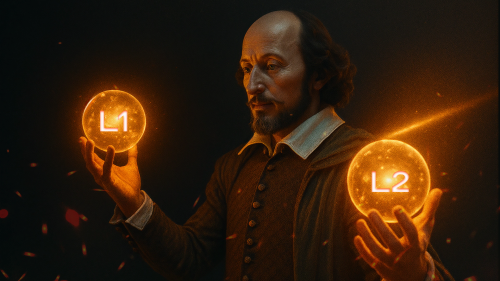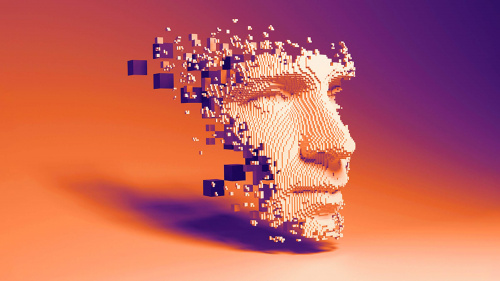Since 2020 it is clear to even the most conservative medical professionals: we can’t manage healthcare service on paper alone any longer. Digital transformation is accelerating globally. It won’t stop with healthcare. The sooner service providers adopt new technologies, the more beneficial it will be for everyone.
The reasons to digitize medical data go far beyond the need to keep up with the trend. Digital technologies will speed up and tighten bureaucratic processes, cut costs, and enable better medical diagnosis and treatment.

On the other hand, transitioning to Electronic Health Records (EHR) has so far revealed as many challenges as it solves. Software developers, researchers and business executives keep working to find solutions, among them also blockchain proponents. But the question is if blockchain has a place at all in medical technology. If yes, can the technology revolutionize and improve the way we track medical data?
In this article we will first examine the biggest challenges in implementing EHR and then investigate if and how blockchain can resolve them. We hope to provide a better understanding of the possibilities and limitations of blockchain in medical technology.
Implementing EHR – what are the top challenges ?
We identified six main issues with moving health records online:
- Costs – In the long run, digital health records will save health care authorities, providers and receivers a lot of money. No more printing, sending, and storing of hardcopies when all health records are created, transmitted and saved digitally.
However, adopting EHR requires a large initial investment in software and technological infrastructure. In addition, the implementation of robust, secure, and scalable software organizations takes time. Organizations need to go though a transition phase in which both paper and digital records are circulated. One functions as a backup for the other. Old and new workflows overlap while staff and users undergo training. All this costs money and time.
- Tech Competence – Using electronic data and digital tools require a certain level of tech savviness. Not all medical personnel can be expected to instantly catch on to new digital systems. Medical service providers and institutions face a huge challenge in getting everyone up to speed using EMR (Electronic Medical Records). An even bigger challenge is to train patients. Especially the older generations, who are less familiar with online tools and have a hard time adapting to online tools.
- Complexity – Moving Health records online requires a complete change in known work processes. Even though digitalization simplifies and speeds up processes, it takes time until users get over the confusion and get used to new ways of doing things. Any new process first causes the entire system to slow down, before the improvement takes effect. In the medical field, where time can be essential to people’s health this poses a major challenge.
When it comes to the medical sector, it’s not a matter of replacing a typewriter and printer with a software application. We are talking about a complex web of databases and communication channels that need to interconnect. This adds another layer of complexity.
- Data Security and Privacy – This is probably the primary patient concern about using EHR. And with good reason. In a world where forging data and faking information is as easy as a mouse click, private digital users are increasingly aware of the need to protect their data. Organizations face threats from ransomware and other cyber attacks which forces them to tighten cybersecurity.
Patient data in hospitals make up 30% of large data breaches, reaching a peak of in 2021.

In the HealthCare Industry data breaches can quickly have life threatening consequences. In addition, the need to keep sensitive data private and accessible only to very specific authorized parties poses an additional challenge.
- Interoperability – The health sector is highly siloed. Each sector, institution and organization use their own systems and file formats. However, to utilize the potential of EHR, the records need to be made accessible to the various systems of the involved parties, such as hospitals, private practices, insurances, emergency care, pharmaceutical supply chain, etc. Medical data needs to be structured and consolidated in a shareable manner across systems and stakeholders.
- Data Governance – EHRs can function as a valuable data source or health care analytics to help understand diseases and improve treatment options. It is critical that the data used in analytics is processed correctly to produce accurate results. The quality of the software to ensure data integrity is one aspect, data management is another. Electronic data management requires a whole new regulatory system in regards to acquiring, handling, storing, transferring and disposing of data. If data is corrupted, lost, leaked, or stolen, the damage can be irreparable and could hamper patients’ well-being or even put their lives at risk.
Blockchain in Electronic Health Records
If you are familiar with the characteristics of blockchain technology, you must have noticed that it addresses some of the top challenges. Extensive research has already been done on the subject of blockchain in healthcare and many research institutions around the world experiment with this alternative revolutionary way to manage heath data.
Blockchain and medical data – what are the costs?
Every move towards more efficiency, collaboration or security involves an initial investment. This is especially true when the transition involves a completely new technology. Blockchain is no exception and the high starting cost can’t be avoided.
It is difficult to compare the expenses, because of the fundamental differences between this and the legacy systems. You can’t compare one on one. Blockchain offers a completely new data management methodology on the back-end.
Whether the initial investment is worth it depends on the impact of the technology on an organization in the long run. Digital transformation is happening gradually. It will gradually expand into all areas of the healthcare sector and digital technologies need the ability to cooperate and communicate. Organizations that think ahead and equip their systems so they are ready for the next steps may be better off and may also save costs in the long run.
Blockchain in medical technology – is it more complex?
At first glance you’ll expect that blockchain technology is significantly more difficult to implement. This is true for developing new applications. On the operational side, today’s blockchain applications can be user-friendly and intuitive.

Whether blockchain or legacy methods, staff and users need to be trained and given time to adapt. Leaders need to plan for a structured transition period and closely monitor progress. Organizations should work out a step by step plan that includes training and ensures everyone involved has access to the necessary resources and receives the support they need.
As the existing blockchain use cases mature, they become increasingly more user-friendly and easier to set up. Once implemented in an organization, Web3 apps are almost as easily accessible as regular applications. For the end user, the difference can hardly be felt.
Can Blockchain ensure privacy and security for medical record tracking?
Common security solutions include password protection, two-way authentication, VPNs, and firewalls. The main risk area remains the transferring of data from one storage location to another, which opens loop holes for hackers and malware. In some cases, transferring data is becoming more complicated instead of simpler with EHRs.
Using blockchain, data security is ensured by the blockchain-specific structure of using encrypted private and public keys. In this system, electronic health data is protected and at the same time immutable. Records can only be accessed by the data owner, who owns the key.
The data owner in a blockchain setting, is the patient. Instead of the caregiver, the care receiver owns their personal data and can grant access permission to various caregivers or service providers in the health sector as needed.

Patients have read permission of their EHR and control access permissions. Healthcare providers can receive either read or read/write access permission, limited to specific data relevant for an issue. The patient can also determine if and which family members or other next of kin receive read permission and can take over permission control in case of emergency.
When it comes to data privacy and security, blockchain definitely presents a significant advantage over legacy systems.
Blockchain and health data – what about interoperability?
The inability to share electronic records in a smooth and satisfactory manner is probably the biggest driver for blockchain developers to move into the health care sector. Today organizations manage the medical data in various systems and formats.
A blockchain basically constitutes a network of organizations. This can include care providers, care receivers, insurances, pharmaceutical suppliers, research institutes and government agencies. Using blockchain, records in different formats can be added as attachments to a data block and made accessible to everyone on the network when granted permission.
This eliminates the need to physically print and provide documents. In contrast, a non-blockchain system requires the various software programs or platforms to be integrated with one another, which cannot be guaranteed.
Another challenge in this context is the issue of duplicate records. In today’s setting, the same health record may be stored in more than one location. This can lead to misunderstandings about the latest version of a particular data set. For example, the list of medications of a patient may have been updated in one location but not in the other (i.e. with the responsible doctor vs the insurance).
When using blockchain, there’s only one record. In case the doctor adds or removes a medication from the patient’s prescription list, that record gets sealed and a new one is created. Everyone with permission to the specific list of prescriptions can now see the new list. There’s no room for misunderstanding.
Blockchain and health data governance
Data privacy and immutability are significant also when it comes to data governance. EHR data can function as a valuable source for health data analytics and research, if it is governed appropriately.

Today, patients are reluctant to participate in clinical trials and share data, because they are concerned it might get used for other purposes, stolen or even sold. With blockchain EHRs, the patient is in charge and can determine which data to share and with whom, they do not need to worry about it being misused.
Patients can share the specific data that are relevant for research and analytics without having to reveal their identity or any private information. Blockchain can potentially eliminate some of the major concerns about sharing data for analytics and research purposes.
The second point is, that analytics and research can only be as accurate as the data it’s based on. With conventional methods it is difficult to provide complete protection against data manipulation and corruption.
Again, blockchain can provide a more satisfactory solution than legacy data management systems. Due to the immutability of data stored on the blockchain, and the impossibility of duplicate data, the data used in analytics is clean and straightforward.
What’s the bottom line?
Where does blockchain present an advantage?
- Enhanced data privacy and security. Combined with the fact that ownership of data is in the hands of the care receiver rather than the caregiver, a more trusted environment for everybody can be created.
- The potential for interoperability on blockchain networks opens the door to receiving better medical care faster and shortening bureaucratic procedures.
- Higher data integrity and immutability allow for better data governance and leads to more accurate health data analytics, disease control and treatment efficiency.
In the long run all these can lead to cost savings in the entire sector and higher efficiency on many levels.
Which issue does blockchain not solve?
The challenges in moving to EHR that blockchain and legacy systems have in common are:
- Cost
- Tech competence
- Complexity
How to decide if blockchain is an option?
Despite the obvious advantages, blockchain has not widely been implemented for health care applications. Many people are still reluctant and associate the technology with shady crypto scams.
However, when investigating the technology as such, it promises higher data integrity, efficiency of processes and a much more trustworthy environment. Software experts and programmers are realizing this and increasingly turn towards experimenting with possible solutions.
They are working to further develop the technology and address some of the challenges that still hamper the wider adoption in health care. As we have seen, blockchain applications are still relatively complex to develop and build. A challenge, which software geeks are eager to tackle and overcome.
Another issue is with scalability. Today, blockchains still have a relatively low throughput (number of transactions per second), although much higher than early blockchains. This also leads to limitations in their ability to expand.
At this point in time, blockchain is not yet applicable for the entire health industry. However, for medium size organizations, the technology could be a beneficial choice. The solution may turn out to become a network of interoperable blockchains on which data can be shared. Large organizations should make themselves familiar with the possibilities and advantages of blockchain and contribute to the ongoing research and development in the field.
As a small institution or private person, you can join an existing network that allows you to manage your health records and take ownership of it. In the next article we will introduce some existing applications.




